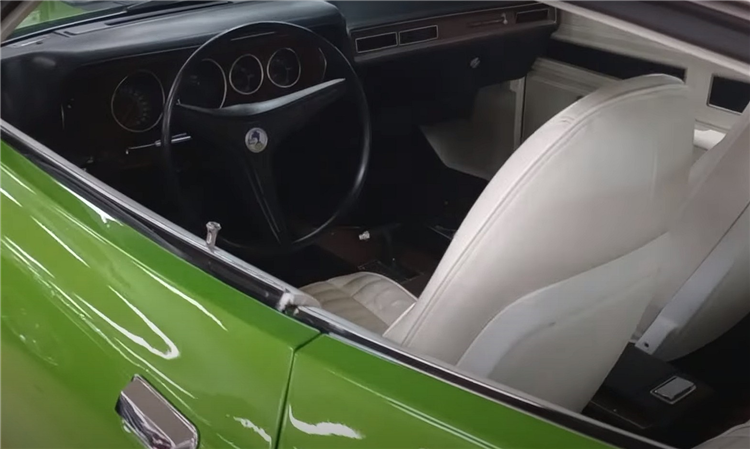Introduced in 1968 as a more affordable alternative to the GTX, the Plymouth Road Runner was very successful in its first years on the market. The nameplate moved more than 44,000 units in 1968 and a whopping 81,105 examples in 1969. Sales remained strong in 1970, with almost 37,000 cars delivered.
But like most muscle cars from the era, the Road Runner saw a dramatic drop in sales in the early 1970s. The Road Runner found only 13,664 customers in 1971 and just 6,860 new homes in 1972. The latter model year no longer included the 426 HEMI and the “Six Pack” version of the 440-cubic-inch (7.2-liter) RB, which makes 1971 examples much more desirable.
These big-block cars are also decidedly rare. Only 246 examples got the 440-6, and just 55 Road Runners were equipped with the 426-cubic-inch (7.0-liter) HEMI. On the flip side, more than 11,000 units left the assembly line with the 383-cubic-inch (6.3-liter) B-block V8 under the hood. But this doesn’t necessarily mean that 1971 383 cars are very common.

While the B-block is indeed the most familiar V8 you’ll find in a 1971 Road Runner, the large number of colors and options Plymouth offered at the time spawned quite a few rare gems. The finely restored example you see here is one of those cars.
Finished in Sassy Grass, one of only six “high impact” colors available in 1971, this Road Runner is one of only 5.5% of cars ordered in the bright green hue. While not quite as rare as FC7 Plum Crazy (4.9%) and FY1 Lemon Twist (only 0.9%), FJ6 Sassy Grass graced only 751 Road Runners in 1971. But this hardtop is also one of 7,952 examples fitted with the 383 V8 and automatic gearbox, so that number drops to only 437 Sassy Grass green cars sporting this layout.
While that’s rare enough in my book, it doesn’t end here. This Road Runner also flexes a white interior, a somewhat rare choice in a green car. There’s no official production statistic based on interior colors to run by, but we’re probably looking at less than 200 cars in this combo. Then there’s the optional Air Grabber hood, which found its way on only 11.2% of Road Runners in 1971.

Do all these numbers turn this Mopar into a one-of-fewer-than-50 gem? We’ll never know for sure without a proper report, but it’s very possible. And it proves you don’t need a 426 HEMI under the hood to own a rare muscle car.
Speaking of which, a 1970 Plymouth HEMI ‘Cuda. Finished in In-Violet purple, it’s also a restored and highly original featuring a numbers-matching mill. This Mopar is one of only 666 ‘Cudas sold with a HEMI in 1970 and one of only 368 hardtops fitted with the automatic transmission. Some 7.4% of 1970 Barracudas were finished in this color, so we could be looking at one of less than 30 built like this. Rarity aside, both Mopars look stunning inside and out. Which one would you drive home?
